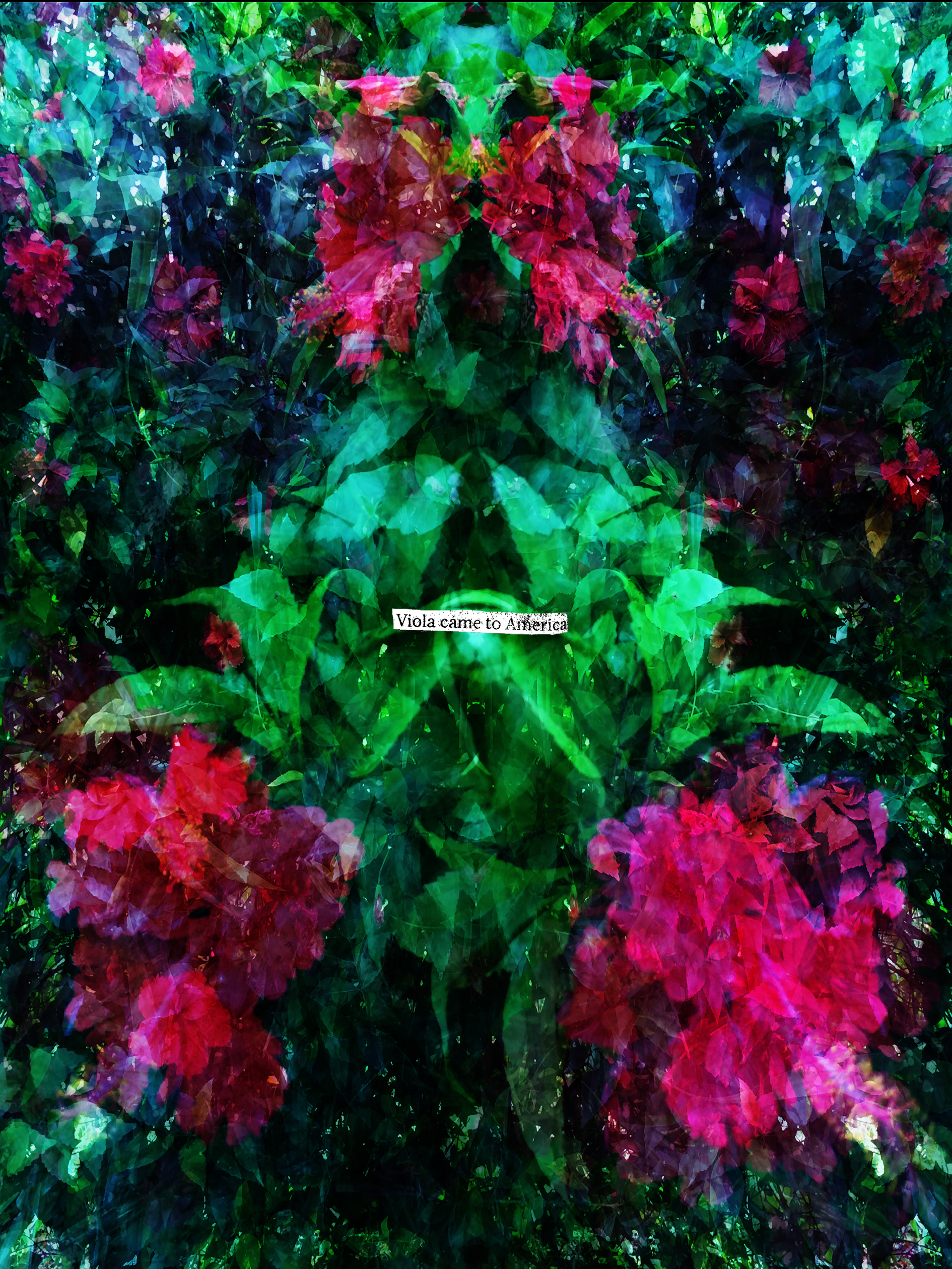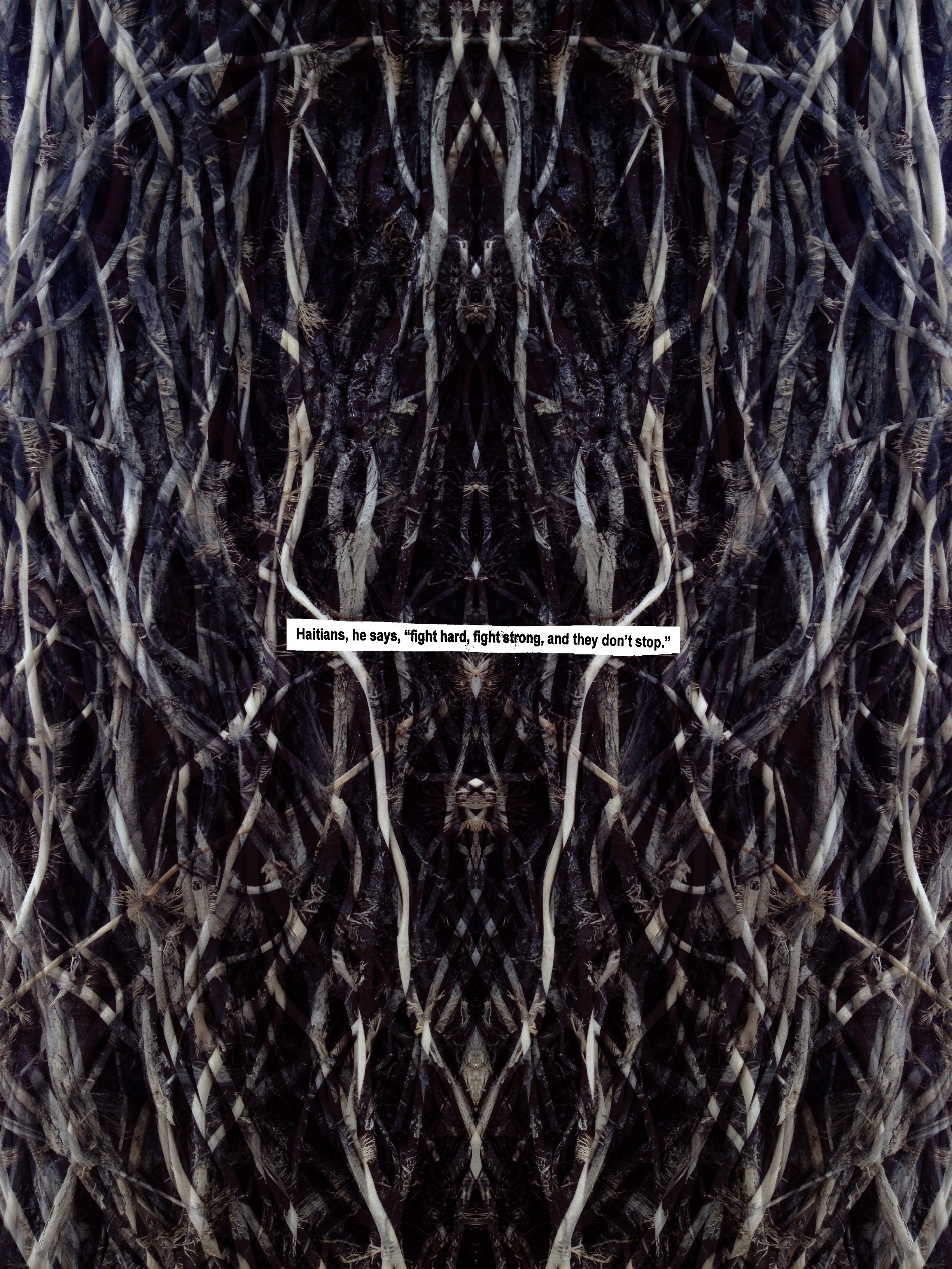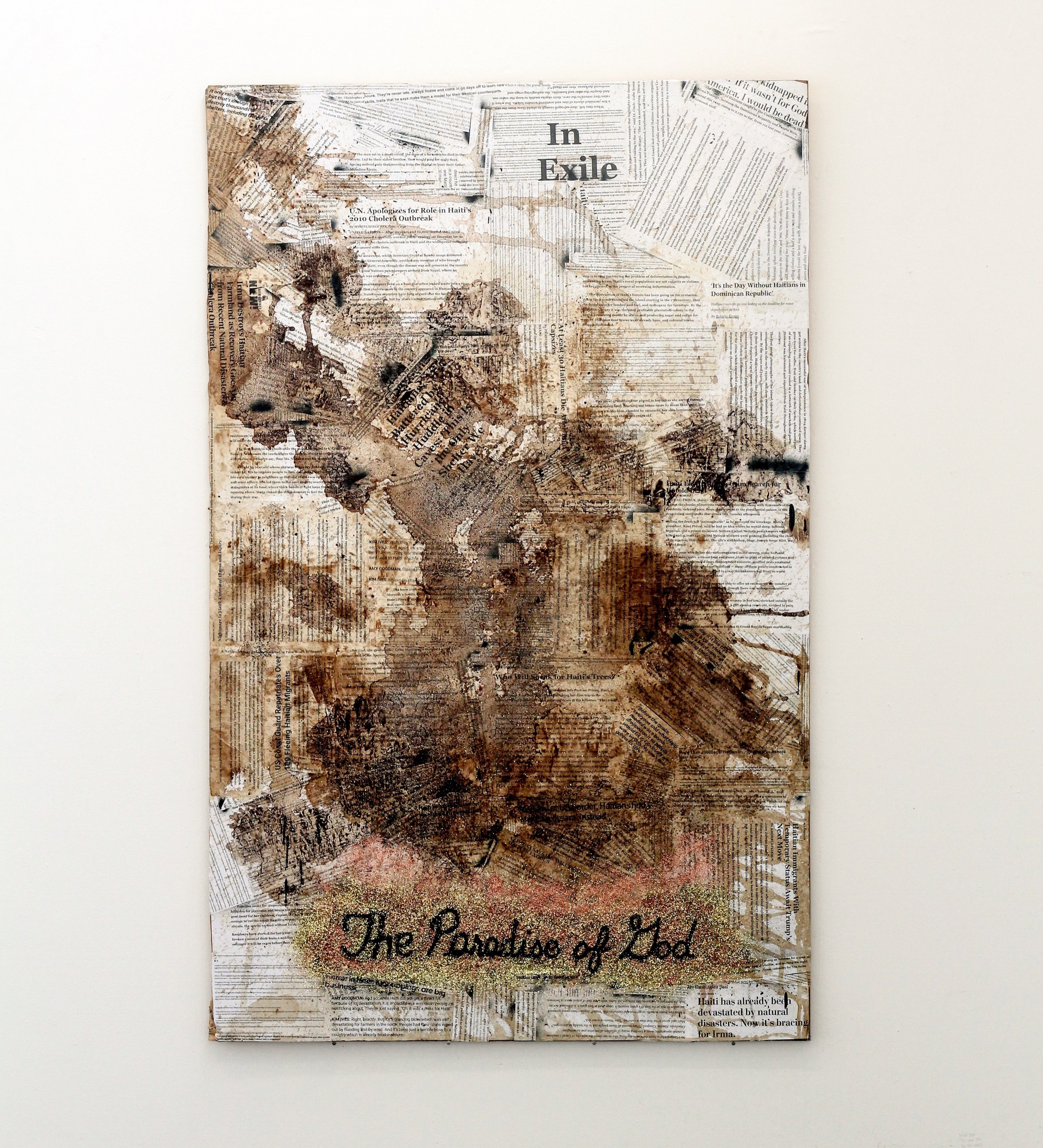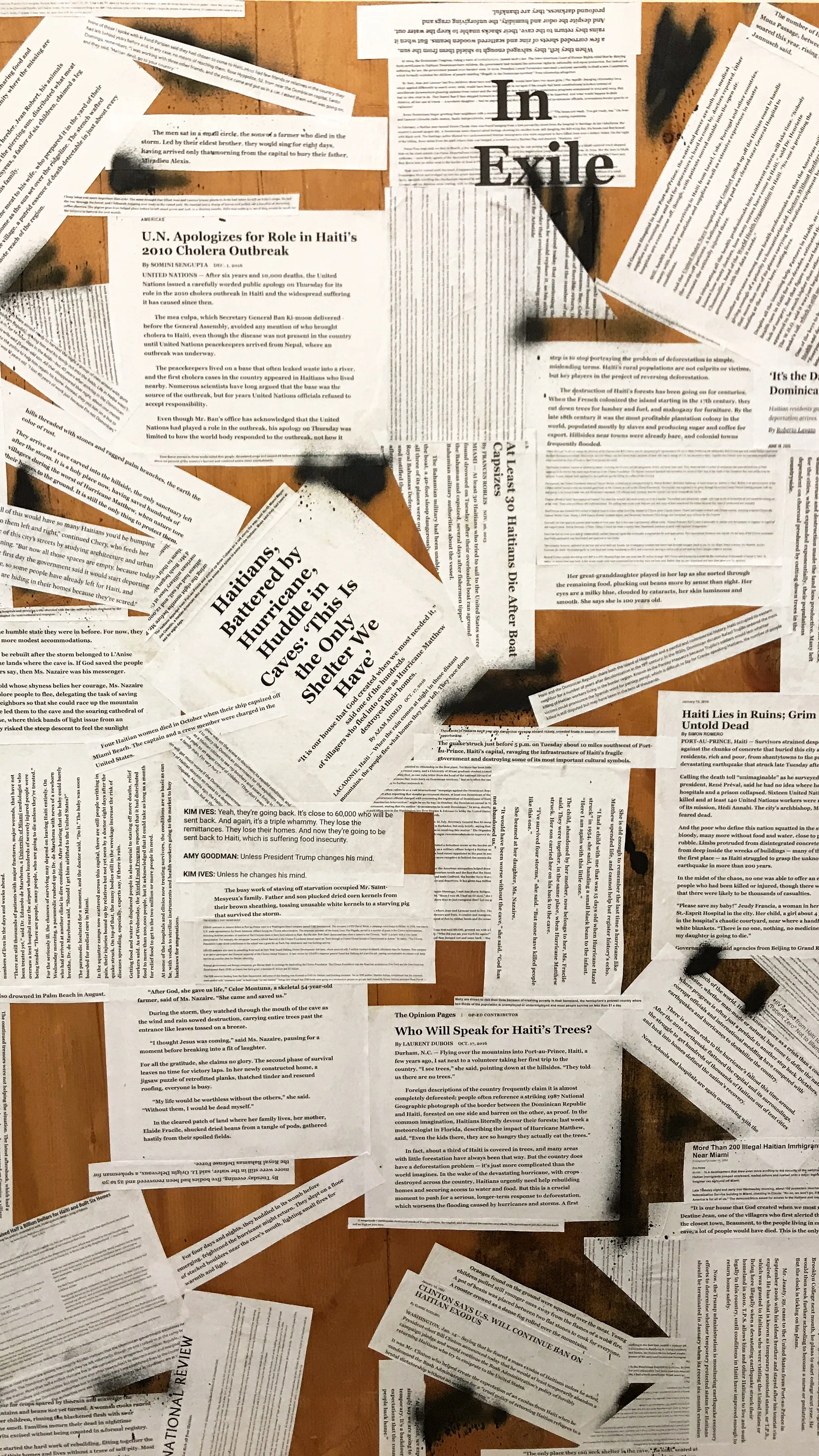in honor of Fet Gede / All Souls Day
i owe my life to the souls on the other side of the water.
Black Mary - A Film by Kahlil Joseph
y'all, i'm floored...#foreverinspo
To coincide with Tate Modern's exhibition 'Soul of a Nation Art in the Age of Black Power' Tate commissioned filmmaker Kahlil Joseph to create a new and exclusive film inspired by the haunting black and white photography of Roy DeCarava.
Part 1 (of a two-part film) featuring Alice Smith's haunting rework of Screamin’ Jay Hawkins’ "I Put a Spell on You."
new x old wips.
IN THE WAKE OF CRISTÓBAL COLOMBO
In the Wake of Cristóbal Colombo, 2017 , Paper, spray paint, glitter and sequins on wood, 52 x 32.5 inches
i've reworked aspects of this so many times...i'm still not sure it's "finished."
if i could say anything about this piece, unresolved or not, it's a talk back to the inundation of negative press coverage on Haiti and Haitians in the West. coverage that promotes disaster capitalism, perpetuates retraumatization, and recycles old narratives of the historical while barely addressing actual history.
i found news clippings from the past two decades, i.e. coverage on everything from the 2010 earthquake, hurricanes Matthew, Harvey, Irma, and now Maria, the cholera outbreak brought on by UN peacekeepers, "boat people" and mass exodus, the blame placed on Haiti for HIV's "entrance" into the U.S., and more and doused them with coffee and salt. traditionally, coffee and salt is given to a person in shock or when one has to deliver bad news (that may cause shock). "The Paradise of God" is written across the bottom in sequins and engulfed by glitter. it's a reference to an entry in Christopher Columbus' nautical journal recounting his fleet's arrival to the island and his first impression(s). intent on enslaving the indigenous Taino - Arawak peoples and mining the island's gold, Haiti was the first island Columbus attempted to colonize in the West. eventually succeeding, Haiti would go from paradise to pearl to pariah under European rule and U.S. occupation.
through this work and my ongoing project, The 10th Department, i am generating an insurgent archive that disrupts conventional archives, which perform violence through misinformation and disinformation. my own form of coffee and salt.
**rather than use the Anglicized version of the Latin Christophorus Columbus aka Christoper Columbus, i've combined Cristóbal (Spanish for Christopher) and Colombo (Italian for Columbus).
in progress...
"Overall, 'The Black Woman Is God' comports with SOMArts’ curatorial practices. The main gallery is a loft-like space with a second, windowless chamber on the far end. The placement of three-dimensional or otherwise large-scale works on the floor is usually deliberate and highly selective, and the paintings and smaller pieces are hung on the walls with the minimum viable amount of breathing room.
It’s not cluttered, exactly. But there is enough to keep the eye engaged that a piece that exerts a tractor beam from across the room can seem even more powerful. The one I have in mind is Tania L. Balan-Gaubert’s Sibyl # 3 / Zili Dechennen (Zili Unleashed). The Haitian-American Balan-Gaubert’s Sibyls series “aims to refuse Western demonization of African religion and ritual,” and while the hooded figure with an electrifying gaze in this work cannot be divorced from that context, it could also be read as a mysterious saint from Eastern Orthodox Christianity, with red and gold sequins and a multicolored mosaic halo. This Sibyl clutches her belly, which may be pregnant, and holds her left arm up, its palm forward. A human heart sits at her throat, and a bandanna with an American flag print conceals her mouth. It’s archetypal, nearly Tarot-esque. You cannot look away."
+Peter Lawrence Kane, SF WEEKLY
studio daze.
new ideas.
new works.
#amen.









